#best vendor management software
Explore tagged Tumblr posts
Text
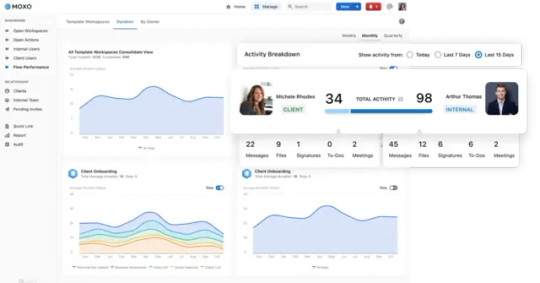
Best Vendor Management Software for Modern Businesses | Moxo
Discover Moxo, the best vendor management software for businesses seeking efficiency and control. With tools for contract management, performance tracking, and collaboration, Moxo provides a comprehensive solution to streamline vendor processes and reduce operational risks.
0 notes
Text
Looking for the best vendor management software?
Digitize your vendors with Bizongo's platform-led solution. Streamline your supply chain and empower vendor businesses with seamless transaction tracking. Gain visibility, eliminate delays, and make your business agile and resilient. Explore a massive embedded vendor network spanning diverse geographies and industries. Source quality products at the right time and price. Achieve 100% compliance with built-in mandates like e-invoicing and e-way bills. Experience quick onboarding, unmatched customer service, and intelligent dataflows for informed decision-making. Maximize your growth and differentiate your business with scalable vendor digitization. Get started today!

1 note
·
View note
Text
🎉 Say Hello to Seamless Event Planning with Ootbo App! 🎉
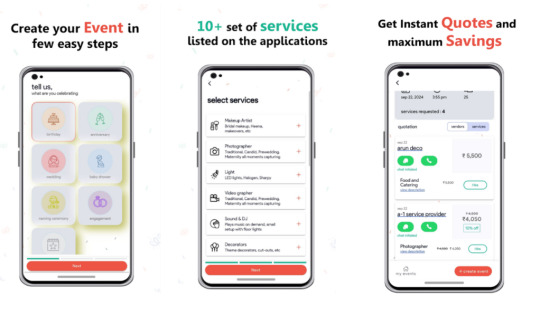
Planning an event can feel like juggling too many tasks at once. From finding the perfect venue to managing vendor communications and staying within budget, it’s easy to get overwhelmed. But what if you had an app that handled everything in one place? Enter the Ootbo App—the ultimate event planning tool designed to make organizing events stress-free, seamless, and fun! 🎈
Whether you’re planning a wedding, corporate event, birthday party, or any special occasion, the Ootbo App is your go-to solution for managing every aspect of the event planning process. 🗓️✨
🌟 Why Choose Ootbo App?
Gone are the days of switching between multiple apps, emails, and spreadsheets. Ootbo App simplifies the entire event planning process, from start to finish. Here’s how:
1. Create Events Effortlessly 🎨
Ootbo offers an intuitive interface that allows you to create detailed events in minutes. Simply input event details, set the date and time, and let Ootbo do the rest. 💡 Pro Tip: Customize your event profile to include specific requirements and preferences for vendors!
2. Receive Multiple Vendor Quotes 💼
Why chase down vendors when they can come to you? With Ootbo, you can: 🔍 Post your event requirements. 📩 Receive multiple quotes from verified vendors. 📊 Compare options side-by-side to choose the best fit.
This saves you time and ensures you get competitive pricing without the hassle of endless phone calls. 📞
3. In-App Vendor Chats 💬
Communication is key when planning an event, and Ootbo has you covered! 📱 Chat with potential vendors directly through the app. 📋 Discuss availability, services, and pricing in real time. 📎 Share documents, photos, and event details seamlessly.
Forget the confusion of scattered email threads—Ootbo keeps all your conversations in one place, organized and easy to access.
4. In-App Calls for Quick Decisions 📞
Sometimes, a quick call can make all the difference. Ootbo allows you to: 🔊 Make in-app calls to vendors without sharing personal contact details. 📌 Record important discussions and reference them later. 📈 Keep all event-related calls connected to your event profile.
No more searching through your call history for vendor numbers—everything stays in the app!
5. Hire Vendors with Confidence 🤝
Once you’ve reviewed quotes and discussed details, hiring your chosen vendor is as easy as a tap! 📄 Securely finalize agreements within the app. 💳 Pay vendors through a secure payment gateway. 🔒 Enjoy peace of mind knowing your transactions are protected.
With Ootbo, you’re not just hiring vendors—you’re partnering with professionals who are ready to make your event a success! 🎉
🏆 The Benefits of Using Ootbo App
All-in-One Solution: Manage your event from creation to completion in a single app.
Time-Saving: No more endless emails, phone calls, or spreadsheets.
Competitive Pricing: Receive and compare quotes to get the best value for your budget.
Seamless Communication: Chat and call vendors directly within the app.
Secure Transactions: Make payments and finalize contracts with confidence.
🎯 Who Can Use Ootbo?
Ootbo is designed for everyone! Whether you’re:
👰 Planning a wedding. 🏢 Organizing a corporate event. 🎂 Hosting a birthday party. 🎭 Coordinating a community event.
Ootbo App is your trusted event planning companion.
📲 Download the Ootbo App Today!
Ready to take the stress out of event planning? Download the Ootbo App today and experience the future of event management!
🔗 Visit Ootbo App to learn more. 📱 Available on iOS and Android.
Make your next event unforgettable with Ootbo! 🎉
With the Ootbo App, event planning has never been easier or more efficient. Start planning your dream event today! 🎈
#vent planning app#Best event management tool#Event vendor management#In-app vendor communication#Compare event vendor quotes#Event budget management app#Online event planning solution#Seamless event planning app#Event planning made easy#Chat with event vendors#Event organizer tool#Hire vendors online#Manage events from mobile#Event planning software for Android & iOS#ow to plan events with a mobile app#Best app to hire event vendors#Manage event budgets and vendors in one app#Event planning solution for weddings and parties#Secure in-app payments for event vendors
2 notes
·
View notes
Text
Available Cloud Computing Services at Fusion Dynamics
We Fuel The Digital Transformation Of Next-Gen Enterprises!
Fusion Dynamics provides future-ready IT and computing infrastructure that delivers high performance while being cost-efficient and sustainable. We envision, plan and build next-gen data and computing centers in close collaboration with our customers, addressing their business’s specific needs. Our turnkey solutions deliver best-in-class performance for all advanced computing applications such as HPC, Edge/Telco, Cloud Computing, and AI.

With over two decades of expertise in IT infrastructure implementation and an agile approach that matches the lightning-fast pace of new-age technology, we deliver future-proof solutions tailored to the niche requirements of various industries.
Our Services
We decode and optimise the end-to-end design and deployment of new-age data centers with our industry-vetted services.

System Design
When designing a cutting-edge data center from scratch, we follow a systematic and comprehensive approach. First, our front-end team connects with you to draw a set of requirements based on your intended application, workload, and physical space. Following that, our engineering team defines the architecture of your system and deep dives into component selection to meet all your computing, storage, and networking requirements. With our highly configurable solutions, we help you formulate a system design with the best CPU-GPU configurations to match the desired performance, power consumption, and footprint of your data center.
Why Choose Us
We bring a potent combination of over two decades of experience in IT solutions and a dynamic approach to continuously evolve with the latest data storage, computing, and networking technology. Our team constitutes domain experts who liaise with you throughout the end-to-end journey of setting up and operating an advanced data center.
With a profound understanding of modern digital requirements, backed by decades of industry experience, we work closely with your organisation to design the most efficient systems to catalyse innovation. From sourcing cutting-edge components from leading global technology providers to seamlessly integrating them for rapid deployment, we deliver state-of-the-art computing infrastructures to drive your growth!
What We Offer The Fusion Dynamics Advantage!
At Fusion Dynamics, we believe that our responsibility goes beyond providing a computing solution to help you build a high-performance, efficient, and sustainable digital-first business. Our offerings are carefully configured to not only fulfil your current organisational requirements but to future-proof your technology infrastructure as well, with an emphasis on the following parameters –
Performance density
Rather than focusing solely on absolute processing power and storage, we strive to achieve the best performance-to-space ratio for your application. Our next-generation processors outrival the competition on processing as well as storage metrics.

Flexibility
Our solutions are configurable at practically every design layer, even down to the choice of processor architecture – ARM or x86. Our subject matter experts are here to assist you in designing the most streamlined and efficient configuration for your specific needs.

Scalability
We prioritise your current needs with an eye on your future targets. Deploying a scalable solution ensures operational efficiency as well as smooth and cost-effective infrastructure upgrades as you scale up.

Sustainability
Our focus on future-proofing your data center infrastructure includes the responsibility to manage its environmental impact. Our power- and space-efficient compute elements offer the highest core density and performance/watt ratios. Furthermore, our direct liquid cooling solutions help you minimise your energy expenditure. Therefore, our solutions allow rapid expansion of businesses without compromising on environmental footprint, helping you meet your sustainability goals.

Stability
Your compute and data infrastructure must operate at optimal performance levels irrespective of fluctuations in data payloads. We design systems that can withstand extreme fluctuations in workloads to guarantee operational stability for your data center.
Leverage our prowess in every aspect of computing technology to build a modern data center. Choose us as your technology partner to ride the next wave of digital evolution!
#Keywords#services on cloud computing#edge network services#available cloud computing services#cloud computing based services#cooling solutions#hpc cluster management software#cloud backups for business#platform as a service vendors#edge computing services#server cooling system#ai services providers#data centers cooling systems#integration platform as a service#https://www.tumblr.com/#cloud native application development#server cloud backups#edge computing solutions for telecom#the best cloud computing services#advanced cooling systems for cloud computing#c#data center cabling solutions#cloud backups for small business#future applications of cloud computing
0 notes
Text

Advanced Delivery Management Software - ZenDMS
ZenDMS is a cutting-edge delivery management software designed to optimize and automate the entire delivery process. From order placement to last-mile delivery, ZenDMS simplifies logistics, ensuring accuracy, efficiency, and real-time transparency for businesses and their customers. Visit:www.zendms.app
#Top Supply Chain Software Providers#Leading Supply Chain Management Solutions#Best Logistics Software Companies#Top SCM Software Providers#Best Supply Chain Management Platforms#Leading Logistics and SCM Software#Top Supply Chain Technology Solutions#Best Supply Chain Optimization Software#Top Logistics Management Software Providers#Best Tools for Supply Chain Management#Top Supply Chain Analytics Platforms#Best Software for Supply Chain Efficiency#Top Inventory Management Software Providers#Best Vendors for Supply Chain Solutions
0 notes
Text
Maximizing Workforce Efficiency: How VMS Platforms Empower Direct Sourcing
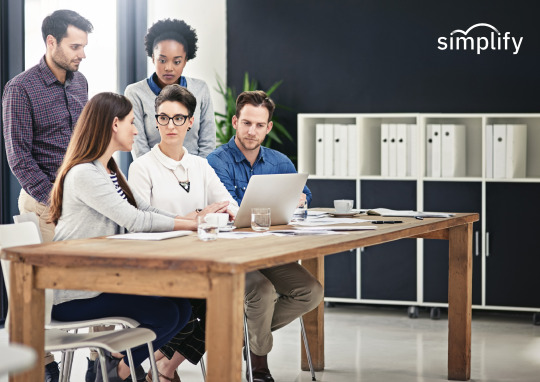
One of the most significant developments in this space is the rise of Vendor Management Systems (VMS), which enable organizations to streamline the management of their contingent workforce. Paired with the growing trend of Direct Sourcing, VMS platforms are revolutionizing how businesses acquire and manage talent.
Understanding Vendor Management Systems (VMS)
A VMS platform is a software solution designed to manage all aspects of an organization’s contingent workforce, from vendor relationships to temporary staff hiring, performance tracking, and payment. It allows companies to centralize and automate processes that were traditionally handled manually or through various disparate systems. The benefits of a VMS platform include better visibility, improved cost control, enhanced compliance, and faster onboarding for contract workers.
The core function of a VMS is to manage third-party staffing vendors, but its utility has expanded as workforce management becomes more sophisticated. A modern VMS platform now also supports Direct Source strategies, enabling companies to build their own talent pools and reduce dependence on external staffing agencies.
Direct Sourcing: A Growing Trend
Direct Sourcing refers to the practice of directly hiring contingent workers from a company’s existing network or talent pool, rather than through external staffing vendors. This approach allows businesses to tap into a pre-vetted group of freelancers, contractors, and temporary workers without incurring the additional costs and markups associated with staffing agencies.
The benefits of Direct Sourcing are clear:
Cost Savings: By cutting out the middleman, companies can save on recruitment fees and vendor markups.
Faster Hiring: Companies with established talent pools can quickly access qualified candidates, reducing the time-to-hire.
Better Quality Control: Organizations have more control over the recruitment process and can ensure that they are hiring workers who align with their specific needs and culture.
How a VMS Platform Enhances Direct Sourcing
While Direct Sourcing provides significant advantages, it requires a strategic and organized approach to managing talent. This is where VMS platforms come in. By integrating Direct Sourcing capabilities into their VMS, companies can optimize the recruitment and management of contingent workers. Here’s how:
Building and Managing Talent Pools: VMS platforms allow companies to create and maintain internal talent pools, consisting of previous contractors, freelancers, and referrals. These workers are often already familiar with the company’s processes and culture, making them ideal candidates for future projects.
Seamless Integration with Workforce Management: A modern VMS platform integrates with HR, procurement, and finance systems, creating a seamless experience for hiring and managing contingent workers.
Automated Workflows: A key advantage of a VMS platform is the automation of recruitment workflows.
Compliance and Risk Management: Hiring contingent workers, particularly across multiple jurisdictions, introduces a range of legal and compliance risks.
Data-Driven Decision Making: VMS platforms provide real-time analytics and reporting, giving companies valuable insights into their contingent workforce.
The Future of VMS and Direct Sourcing
As the contingent workforce continues to grow, the combination of Vendor Management System platforms and Direct Sourcing will become even more integral to workforce management strategies. Emerging technologies such as Artificial Intelligence (AI) and Machine Learning (ML) will further enhance VMS capabilities, enabling predictive workforce planning, talent matching, and real-time decision-making.
Conclusion
The integration of VMS platforms and Direct Sourcing is transforming how businesses manage their contingent workforce. By centralizing and automating key processes, VMS platforms empower organizations to take control of their talent acquisition strategies, reducing costs, improving efficiency, and ensuring compliance. As Direct Sourcing continues to gain popularity, businesses that effectively leverage their VMS will be well-positioned to stay competitive and responsive to changing market demands. The future of workforce management is one where agility and efficiency go hand in hand, and VMS platforms are at the heart of this transformation.
[REVEALED]: 7 Questions You Must Ask In 2024 Before Investing in a VMS
Top 6 Reasons Why You Should Absolutely Invest in a VMS
What is the Importance of Credentialing in Healthcare?
#b2bmarketing#b2b services#business#hr software#success#vms#vendors#technology#directsourcing#recruiting solutions#compliance#talentacquisition#contractors#applicant tracking system#management#workforce#contractmanagement#vendor company#best vendor replica yupoo#automation#usa#hr solutions#vendor management solutions#vendor management software#contingentworkforce#vendor management tools#vendormanagement#procurement#ai#job interview
0 notes
Text
Boost Business Efficiency with Catalyst PhiEdge's Powerful Performance Management System
The Performance Management System by Catalyst PhiEdge is designed to help businesses achieve optimal performance through data-driven insights and streamlined processes. This comprehensive solution allows organizations to set clear goals, monitor progress, and enhance employee productivity. With its user-friendly interface, the system promotes continuous feedback, ensuring alignment with business objectives and boosting overall efficiency. Whether you're looking to improve individual performance or foster team collaboration, this tool provides the flexibility and scalability to meet your unique business needs.
#Performance management software#Performance management systems#Best Performance management system software#Performance management software vendors in India#Performance management software vendors list#Performance management software vendors pdf#Performance management software examples#Employee performance management software
0 notes
Text
Integrating E-Commerce Solutions across Websites and Apps for Multi-Platform Selling
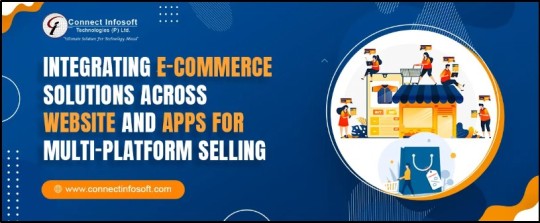
In digital age, e-commerce has become an integral part of the retail industry. With the rapid growth of online shopping, businesses are constantly seeking ways to expand their reach and maximize their sales potential. One effective strategy that has emerged is multi-platform selling, which involves integrating e-commerce solutions across websites and apps to create a seamless shopping experience for customers.
Without a doubt, selling across various platforms is a game changer in the realm of custom eCommerce development, with the potential to propel any organization to new heights. This blog will look at all aspects of multi-platform selling and how it affects the modern eCommerce business scene. Let us get started.
eCommerce Evolution: A New Era of Online Selling
Welcome to the new era of online selling! With the ever-growing popularity of e-commerce, businesses are constantly seeking ways to expand their reach and increase their sales. One such method that has gained significant traction is multi-platform selling, which involves integrating e-commerce solutions across websites and apps.
However, because consumer behaviours and market demands change so quickly, an all-in-one or single eCommerce strategy is insufficient for long-term success. This is where multi-platform selling provides numerous chances for firms looking to increase engagement and diversify their reach.
What Does Multi-Platform Selling Mean?
Multi-platform selling refers to the practice of selling products or services through multiple online channels simultaneously. This approach allows businesses to reach a wider audience and cater to customers' preferences across various platforms, including websites, mobile apps, social media platforms, and marketplaces. By offering a consistent shopping experience across different channels, businesses can enhance customer engagement, increase brand visibility, and boost sales.
Whether you run a little business or a large corporation, if you carefully position your company on these platforms, you will meet all of your customers' expectations by providing a convenient purchasing experience. However, managing sales across several channels is not as simple as it appears; a custom eCommerce development solution is required to optimize the process.
Major Perks of Multi-Platform Selling
There are several significant perks associated with multi-platform selling. Let's take a closer look at some of the major advantages that businesses can enjoy:
1. Expanded Reach: By leveraging multiple platforms, businesses can tap into a larger customer base and target diverse demographics. This broadens their reach and increases the chances of attracting new customers.
2. Enhanced Customer Experience: Multi-platform selling enables businesses to provide a seamless and consistent shopping experience across various channels. Customers can browse products, make purchases, and access support services conveniently, regardless of the platform they prefer.
3. Increased Sales Opportunities: With multiple channels at their disposal, businesses have more opportunities to showcase their products and services and convert leads into sales. Each platform serves as an additional sales channel, increasing the chances of generating revenue.
4. Improved Brand Visibility: Businesses may increase brand awareness and familiarity by maintaining a presence across many media. Consistent branding across channels promotes client trust and loyalty.
5. Better Data Insights: Multi-platform selling allows businesses to gather data from different sources, providing valuable insights into customer behaviour, preferences, and trends. This data can be used to optimize marketing strategies, personalize customer experiences, and drive informed business decisions.
Other key benefits of multi-platform selling include:
Improved conversion rate
Better customer loyalty.
Improved inventory transparency.
Improved customer segmentation.
Mobile commerce trend capitalization
Best Platforms for Multi-Channel eCommerce Business
1. Shopify: Shopify offers a comprehensive e-commerce platform that allows businesses to create and manage online stores. It provides seamless integration with various sales channels, including websites, mobile apps, social media platforms, and marketplaces.
2. Magento: Magento is a highly flexible and scalable e-commerce platform that caters to businesses of all sizes. It supports multi-channel selling by integrating with multiple platforms, enabling businesses to sell across websites, mobile apps, and marketplaces.
3. Etsy: If you want to sell antique, handcrafted, craft supplies, or other one-of-a-kind things online, Etsy is a great place to start. Users may easily access a wide range of product categories on this marketplace, including clothing, jewellery, tools, home, living, kids & babies, and entertainment.
4. Amazon Marketplace: As one of the largest online marketplaces, Amazon provides businesses with a vast customer base and global reach. Selling on Amazon Marketplace can significantly expand the visibility and sales potential of products.
5. eBay: eBay is another popular online marketplace that allows businesses to sell products to a wide range of customers. With its auction-style listings and fixed-price options, eBay offers flexibility for multi-channel selling.
6.Walmart Marketplace: Walmart is a frequently used marketplace that provides excellent prospects for online enterprises. This is a curated e-commerce portal. As a seller, you must meet specified requirements for providing excellent customer service.
7. Facebook Marketplace: This is Facebook's integrated platform that provides fantastic online selling choices to local sellers and small enterprises. This platform is simple to use and helps you promote your goods to a social media-savvy customer audience.
How to Set Up a Successful Multi-Platform Selling Strategy:
1. Identify Target Platforms:
Research and analyse the platforms that align with your target audience and business objectives. Consider factors such as platform popularity, user demographics, and integration capabilities.
2. Seamless Integration:
Select e-commerce platforms that offer robust integration capabilities with various channels. Ensure that your chosen platforms can synchronize product listings, inventory, pricing, and order management across all channels.
3. Consistent Branding:
Maintain consistent branding elements, such as logo, colors, and messaging, across all platforms. This creates a cohesive brand identity and fosters customer recognition and trust.
4. Optimize User Experience:
Provide a user-friendly and intuitive shopping experience on every platform. Optimize website and app performance, ensure mobile responsiveness, and streamline the checkout process to minimize friction and maximize conversions.
5. Data-Driven Decision Making:
Leverage analytics and data insights to monitor and measure the performance of each platform. Identify trends, customer preferences, and areas for improvement, and use this information to refine your multi-platform selling strategy.
6. Customer Support:
Offer consistent and responsive customer support across all platforms. Provide multiple channels for customer inquiries, such as live chat, email, and phone, to ensure a seamless support experience.
7. Cross-promotion:
Cross-promotion is a marketing strategy where two or more parties promote each other's products or services to their respective audiences. It's a mutually beneficial arrangement that can help increase brand exposure, reach new customers, and drive sales.
8. Privacy and Data Security:
- Manage all of your customers' data safely.
- Display all privacy policies to your customers to develop trust.
9. Focus on market trends.
- Keep up with the latest industry developments, platform updates, and client requests.
- Be prepared to change your business approach (if necessary) to stay ahead of the market.
Conclusion:
Multi-platform selling has become a crucial strategy for businesses aiming to thrive in the competitive e-commerce landscape. By integrating e-commerce solutions across websites and apps, businesses can expand their reach, enhance the customer experience, and boost sales. With the availability of various platforms, businesses can choose the ones that align with their target audience and business goals. By implementing a well-planned multi-platform selling strategy, businesses can establish a strong presence across multiple channels, drive customer engagement, increase brand visibility, and ultimately achieve success in the evolving world of e-commerce.
#Multi-Vendor E-Commerce Market Place Software#Best Multi-Channel Listing Software Solutions For Ecommerce Sellers#ECommerce Management Solution#ECommerce Product Management#Best ECommerce Software#Multi-Channel Selling Software#Shipping Software#Multi-Channel eCommerce Inventory Management Software#Product Listing Software#Multichannel Marketplace Software#Connect Infosoft#E-commerce website development#E-commerce website optimization#Mobile commerce optimization#Mobile commerce solutions#Multi-channel sales management
0 notes
Text
The Definitive Guide to Best Real Estate CRM Software
Customer relationship management (CRM) software is a pivotal tool for modern businesses, designed to manage interactions with current and potential customers. At its core, the best real estate CRM software centralizes customer data, automates various tasks, and enhances communication, thereby enabling businesses to build stronger relationships and improve overall efficiency.
In the real estate industry, cloud-based real estate management software is particularly essential due to the complex and multifaceted nature of real estate transactions. By leveraging PMS software, real estate businesses can streamline their operations, enhance client interactions, and ultimately achieve better outcomes. In a highly competitive market, adopting the right CRM solution can be a game-changer, providing a significant edge over competitors.

Benefits of Using Real Estate CRM Software
Improved customer relationship management
Enhanced lead management and conversion rates
Streamlined workflow and task automation
Better data organization and accessibility
Increased sales and revenue
Key Features to Look for in the Top Real Estate CRM Software
Lead and contact management
Email and communication tracking
Task and calendar management
Marketing automation tools
Reporting and analytics
Mobile accessibility
Integration with other tools and platforms
How to Choose the Best CRM Software for Your Real Estate Business
Assessing your business needs and goals
Evaluating the scalability and flexibility of the software
Considering the ease of use and user interface
Checking for customer support and training resources
Reading user reviews and seeking recommendations
Taking advantage of free trials and demos
Importance of Choosing the Right CRM Software for Real Estate Businesses
Selecting the appropriate solution for real estate businesses is a critical decision that can significantly impact operational efficiency, client satisfaction, and overall business success. Here’s a recap of the key reasons why choosing the right software is so important for real estate professionals:
1. Enhanced Efficiency and Productivity
Automation of Routine Tasks: The right PMS software automates repetitive tasks such as scheduling, follow-ups, and data entry, freeing up valuable time for real estate professionals to focus on high-value activities like client interactions and closing deals.
Streamlined Workflow: Efficient real estate management software streamline workflows, ensuring that all processes from lead generation to closing are handled seamlessly and efficiently.
2. Improved Client Management and Relationships
Centralized Data: A good CRM system centralizes all client data, making it easily accessible and providing a comprehensive view of each client’s history and preferences. This allows for more personalized service and better client management.
Enhanced Communication: PMSs consolidate communication channels, ensuring that no client interaction is missed and all communications are recorded for future reference.
3. Effective Lead Management
Lead Tracking: Effective system tracks leads through every stage of the sales pipeline, ensuring that potential clients are nurtured and followed up with appropriately.
Improved Conversion Rates: By managing and analyzing leads efficiently, cloud-based software helps in improving conversion rates, and turning more prospects into clients.
4. Data-Driven Decision Making
Advanced Analytics and Reporting: The right system provides powerful analytics and reporting tools that help real estate professionals track performance metrics, identify trends, and make informed, data-driven decisions.
Performance Monitoring: Regular insights into key performance indicators (KPIs) allow businesses to monitor progress, identify bottlenecks, and adjust strategies as needed.
5. Increased Mobility and Accessibility
Mobile Access: The best CRM solutions offer mobile accessibility, enabling real estate professionals to manage their work on the go and stay connected with clients from anywhere.
Real-Time Updates: Mobile access ensures that all data is updated in real time, providing accurate and up-to-date information at all times.
6. Scalability and Flexibility
Adapting to Growth: The best CRM software can scale with your business, accommodating increased numbers of users and more complex processes as the business grows.
Customization: Flexible solutions can be customized to fit the specific needs and workflows of a real estate business, ensuring optimal performance.
7. Enhanced Security and Compliance
Data Protection: Quality CRM software provides robust security features to protect sensitive client information and ensure compliance with data protection regulations.
Regulatory Compliance: Automated compliance checks help businesses adhere to relevant laws and regulations, reducing the risk of legal issues.
Final Thought
Choosing the right solution is crucial for real estate businesses aiming to enhance efficiency, improve client relationships, and drive growth. By leveraging the right tools, real estate professionals can automate routine tasks, manage leads effectively, make data-driven decisions, and provide exceptional client service. In a competitive market, the CRM software is not just a tool, but a strategic asset that can propel a real estate business to new heights of success.
#best real estate crm software#rems software#real estate software vendor#pms software#crm software for property management#property management software
1 note
·
View note
Text
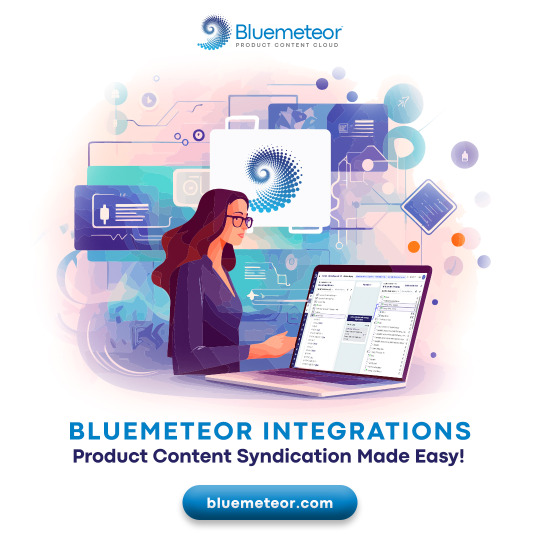
A modern approach for managing product content
Enhance product content quality and performance while reducing cost and complexity. Fully automate & streamline the onboarding of product content from any data source(s) to any Product Information Management (PIM) system. Create, manage, & optimize your product content, including digital & media assets from one place for a single source of product content.
#product data#product information management#pim#pxm#dam#syndication#ecommerce integration#pim platform#pim ecommerce#DataBridge#dam software#best pim software#vendor portal#data integrity#product master#improve data quality#data intelligence#content syndication#pim software#master data management#pim system#digital product
1 note
·
View note
Text
Maximizing Retail Profits: Harnessing B2B Price Optimization Software
In the ever-evolving world of retail and e-commerce, businesses are constantly seeking ways to gain a competitive edge. Among the many strategies employed, B2B Price Optimization and Management Software stands out as a game-changer. Price optimisation and management (PO&M) software solutions enable businesses to oversee and optimize the prices of their goods and services. These services also provide a growing range of sales intelligence advice, such as best-next-action suggestions and customer churn warnings. In the industry, vendors either focus on back-office price management and product management roles, or they focus on providing real-time sales intelligence to sales representatives and B2B digital commerce websites, or both. Quadrant Knowledge Solutions, a leading global advisory and consulting firm, has recognized the significance of this technology in their report, “B2B Price Optimization and Management Applications, 2023”. Quadrant Knowledge Solutions focuses on helping clients in achieving business transformation goals with Strategic Business, and Growth Advisory Services.
Download the sample report of Market Share: B2B Price Optimization and Management Software
Understanding the Retail and E-commerce Landscape
The retail and e-commerce industry is a highly dynamic and competitive space. Companies within this domain face the continuous challenge of pricing their products right to maximize profitability while staying attractive to their customers. In this context, pricing becomes a critical element of their strategy. Let's delve into some of these challenges:
Rapidly Changing Market Dynamics: Retail and e-commerce markets are highly volatile, with ever-shifting consumer preferences and market trends. Adapting to these changes in real-time is essential to stay competitive. Without the right tools, businesses risk making pricing decisions that are out of sync with market realities.
Intense Competition: In retail and e-commerce, competition is fierce. With numerous players offering similar products or services, pricing becomes a key differentiator. Setting prices too high can drive customers away, while pricing too low can erode profit margins.
Complex Supply Chain and Cost Structures: The retail and e-commerce sector often deals with complex supply chain operations and cost structures. Understanding the true costs associated with a product or service is essential for setting optimal prices. Traditional methods of cost calculation can be time-consuming and error-prone.
Customer Behaviour and Expectations: Today's consumers are more informed and price-sensitive than ever before. Their buying behaviour can change rapidly in response to various factors, including promotions, discounts, and market trends. Retailers must be agile in responding to these changes.
Competitor Pricing Strategies: Keeping a constant eye on competitor pricing is crucial. Businesses need to respond promptly to pricing moves made by competitors to remain competitive. Manual tracking and analysis of competitor pricing are arduous and inefficient processes.
Download the sample report of Market Forecast: B2B Price Optimization and Management Software
B2B Price Optimization and Management Software: A Necessity
B2B Price Optimization and Management Software is the solution to these challenges. This technology leverages advanced algorithms, data analytics, and real-time market insights to help businesses make data-driven pricing decisions. It empowers retail and e-commerce companies to optimize their prices efficiently while taking into account factors like demand fluctuations, competitor pricing, and customer behaviour.
Talk To Analyst: https://quadrant-solutions.com/talk-to-analyst
#In the ever-evolving world of retail and e-commerce#businesses are constantly seeking ways to gain a competitive edge. Among the many strategies employed#B2B Price Optimization and Management Software stands out as a game-changer. Price optimisation and management (PO&M) software solutions en#such as best-next-action suggestions and customer churn warnings. In the industry#vendors either focus on back-office price management and product management roles#or they focus on providing real-time sales intelligence to sales representatives and B2B digital commerce websites#or both. Quadrant Knowledge Solutions#a leading global advisory and consulting firm#has recognized the significance of this technology in their report#“B2B Price Optimization and Management Applications#2023”. Quadrant Knowledge Solutions focuses on helping clients in achieving business transformation goals with Strategic Business#and Growth Advisory Services.#Download the sample report of Market Share: B2B Price Optimization and Management Software#Understanding the Retail and E-commerce Landscape#The retail and e-commerce industry is a highly dynamic and competitive space. Companies within this domain face the continuous challenge of#pricing becomes a critical element of their strategy. Let's delve into some of these challenges:#Rapidly Changing Market Dynamics: Retail and e-commerce markets are highly volatile#with ever-shifting consumer preferences and market trends. Adapting to these changes in real-time is essential to stay competitive. Without#businesses risk making pricing decisions that are out of sync with market realities.#Intense Competition: In retail and e-commerce#competition is fierce. With numerous players offering similar products or services#pricing becomes a key differentiator. Setting prices too high can drive customers away#while pricing too low can erode profit margins.#Complex Supply Chain and Cost Structures: The retail and e-commerce sector often deals with complex supply chain operations and cost struct#Customer Behaviour and Expectations: Today's consumers are more informed and price-sensitive than ever before. Their buying behaviour can c#including promotions#discounts#and market trends. Retailers must be agile in responding to these changes.#Competitor Pricing Strategies: Keeping a constant eye on competitor pricing is crucial. Businesses need to respond promptly to pricing move#Download the sample report of Market Forecast: B2B Price Optimization and Management Software
0 notes
Text
Revolutionizing Vendor Relationships and Client Onboarding with Smart Software Tools
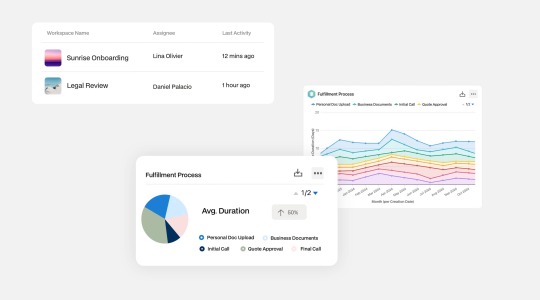
In the current era of extreme competition in business, timely vendor management has never been so crucial for businesses in client onboarding. Along with the company's growth, it's the business that becomes intricate in dealing with a renowned network of suppliers, contractors, and clients. Fortunately, technology is smart enough to unravel such complexities and move things faster to simplicity, transparency, and scalability. The top vendor management software has therefore transformed into one of the essential tools in the customer onboarding process, playing all that makes your business effort better, stronger, and more efficient against risk.
Streamlining Customer Onboarding with Automation
Very similar to ways through which vendor management software can streamline the external relationships of businesses, customer onboarding software does this for new clients. This is the very foundation of good onboarding success for long-term satisfaction and retention of the client. It is how onboarding tools help, removing the bottlenecks involved with setting up new clients and allowing them faster and more effective familiarization with your products or services.
Customer onboarding software generally comprises automated emails, welcome kits, and knowledge base articles to guide clients through the first steps of the initial engagement. Automating such things can guarantee that no client will feel deprived or lose their way in the first encounter. These tools also empower organizations to collect crucial client data at the onset and use it to personalize and tailor the experience they get.
Hence, customer onboarding systems are a way for businesses to realize that they can indeed increase retention through ease and simplicity of experience for their clients from the beginning. Each step measured and tracked through this onboarding process would yield potential business problems before they culminate and encourage adoption easily.
Benefits of Integrating Vendor Management and Customer Onboarding Software
Of course, with both the vendor management software and the best customer onboarding tools, such an integration would serve to approach every operation as a whole. Things will run smoothly with streamlined processes for the vendor and the end customer. These efficiencies will increase efficiency and reduce the administration burden, resulting in a better customer experience.
For example, through the centralization of both vendor and client information, companies can reduce redundancy in data entries and minimize chances for mistakes. Furthermore, since both processes are related to the exchange of critical information, it will be essential for their data to be kept in sync between both systems in terms of integrity, trust, and accuracy.
Undoubtedly, a unified system will also enhance collaboration across departments. Sales department members, for instance, can effectively manage the vendor ecosystem and its client onboarding simultaneously to align vendor/customer expectations from the start. It allows both parties to enjoy better interactions, thus translating to quicker response time.
Conclusion: The Future of Vendor and Client Management
The way a company manages its external relationships with vendors and client engagements has significantly changed. Businesses looking to reduce their dependence on pre-technological vendor management systems and outdated client onboarding systems will see vast improvements in efficiency, risk reduction, and better connection with both vendors and clients.
As organizations multiply, integrating these systems increases in significance. Automating repetitive tasks, while keeping everything transparent at every level, allows human organizational energies to be directed to bonding relationships while providing great service. This is indeed the way to becoming streamlined, collaborative, and customer-centric.
Read More : customer onboarding solutions
0 notes
Text
What are Edge Computing Services?
Edge Computing Services

EDGE
Edge servers facilitate rapid on-site computing, reducing latency for time-sensitive applications like communications services, real-time navigation, AI-driven IoT devices for Smart City infrastructure, and high-quality AR/VR.
Edge computing services
Since edge servers handle the bulk of the workload for such applications, they must include ample computing resources and data memory, besides fast response times.
Advantages of our EDGE product offerings
Lower Operating Costs
Our edge servers help reduce the client’s operating costs across the board. Localized data processing will reduce your organization’s expenditure on network bandwidth, and faster response times lead to increased efficiency.
Capital Savings
With edge solutions, the requirement for centralized cloud computing and storage is minimized. Additionally, the use of edge servers ensures optimal use of locally available resources, contributing to further capital savings.
Stable Operation
Fusion Dynamics edge server racks can withstand extreme environments and shocks and are compatible with Class-A electromagnetic limits. This ensures that your edge solution is compliant with the industry standards for telecommunication infrastructure.
Data and Network Security
With Edge, your computing resources and data are contained on-site, close to user equipment. This local storage and transmission of sensitive data offers higher security. You can also configure local servers for additional access control without impacting the rest of your network. At scale, distributed deployment of servers across different edge locations limits the damage caused by data breaches, thus maximising your network security.
Accessibility and Usability
Our servers boast a modular design, which allows seamless front-end access and ease of service. Supporting a range of virtualization stacks, they can also be configured quickly to jumpstart your system and operations.
Contact Us
+91 95388 99792
#Primary keywords#Keywords#cloud computing based services#technology cloud computing#future of cloud computing#hpc cluster management software#cluster manager#cooling solutions#available cloud computing services#cloud backups for business#cloud platform as a service#platform as a service in cloud computing#platform as a service vendors#workload in cloud computing#cloud workload protection platform#edge network services#edge computing services#cloud native application development#native cloud services#edge computing solutions for telecom#applications of large language models#best large language models#large language model applications#structured cabling installation#data center structured cabling#data center cabling solutions#ai services providers#services on cloud computing#cloud backups for small business#integration platform as a service
0 notes
Text
Contractor: How to Submit and Manage Timesheets?
The "Guides for Vendors" blog on SimplifyVMS provides comprehensive resources for vendors to navigate and optimize their use of the Vendor Management System (VMS). It includes step-by-step instructions, best practices, and expert tips to enhance vendor operations and compliance. These guides aim to support vendors in efficiently managing their workforce, improving collaboration, and maximizing the benefits of the VMS platform.
For more details, visit Guides for Vendors.
#contingentworkforce#vendors#vendor management software#vendor invoice management#vendormanagement#vendor management solutions#vendor management tools#vms#contingentworker#talentacquisition#talent agency#opportunity#compliance#supplychainmanagement#supplychainsolutions#procurement#best vendor replica yupoo#directsourcing#ai tools
0 notes
Text
Cash Flow Management Software
Tally on Mobile | Are you a Tally user? Get BFM - the best business intelligence platform and access Tally data on mobile. Automate payment reminders and collect payments 20% faster.
https://www.zikzuk.com/contact-us
#vendor invoice management software#Best Business Intelligence Platform#accounts receivable management
0 notes
Text
The Internet: From Nuclear-Resistant to Vendor-Dependent Dumbassery
Back in the day, when the Internet was just a glint in DARPA's eye, it was designed with one crucial concept in mind: survival. Picture this—it's the Cold War, the threat of nuclear Armageddon looms large, and the military bigwigs are sweating bullets about communication breakdowns. They needed a network that could withstand a nuke dropping on a major hub and still keep the flow of information alive. Enter the ARPANET, the badass granddaddy of the modern Internet, built to have no single point of failure. If one part got nuked, the rest would carry on like nothing happened. Resilient as hell.
Fast forward to today, and what do we have? A digital house of cards. The once mighty and decentralized Internet has become a fragile mess where a single vendor bug can knock out entire swathes of the web. How did we go from a network that could shrug off nuclear bombs to one that craps its pants over a software glitch? Let's dive into this clusterfuck.
The Glory Days of Decentralization
The original ARPANET was all about redundancy and resilience. The network was designed so that if any one part failed—be it from a technical issue or a catastrophic event—data could still find another route. It was a web of interconnected nodes, a spider's web that kept spinning even if you tore a chunk out. It was pure genius.
This approach made perfect sense. The whole point was to ensure that critical military communications could continue even in the aftermath of a disaster. The Internet Protocol (IP), the backbone of how data travels on the Internet, was conceived to route around damage and keep on trucking. No single point of failure meant no single point of catastrophic breakdown. Brilliant, right?
The Rise of Centralized Stupidity
Then came the tech giants. Companies like Google, Amazon, and Microsoft built empires that depended on centralization. Cloud computing took off, and suddenly, everyone and their grandma was storing their data on a handful of massive servers owned by these big players. It was convenient, it was efficient, but it was also the beginning of the end for the Internet’s robust decentralization.
Today, we've got massive data centers dotted around the globe, each housing thousands of servers. These centers are like Fort Knox for data, but unlike Fort Knox, they’re not immune to problems. A single screw-up—a bug in a software update, a misconfiguration, or even a physical hardware failure—can take down huge chunks of the web. Remember that time when AWS went down and half the Internet went dark? Yeah, that was fun. Or more recently, Cloudstrike do something retarded and every single Windows machine running their shitware gets bricked. Fantastic.
The Single Vendor Blues
It gets worse. The consolidation of Internet services means that many critical applications and websites rely on the same vendors for infrastructure. If one of these vendors messes up, it's not just their services that go down—it's everyone who depends on them too. It’s like having a whole city’s power grid depending on one dodgy generator. One hiccup, and the lights go out for everyone.
Consider the infamous BGP (Border Gateway Protocol) hijacks and leaks. BGP is how routers figure out the best path for data to travel across the Internet. It's crucial, and it's also vulnerable. A single misconfiguration or malicious attack can reroute traffic, causing widespread outages and security breaches. And because so much of the Internet is funneled through a few major ISPs (Internet Service Providers), the impact can be catastrophic.
Why This Is So Fucking Stupid
So, why is it that we’ve allowed the Internet to become this fragile? It boils down to a mix of convenience, cost-cutting, and plain old shortsightedness. Centralized services are easier to manage and cheaper to run. But this efficiency comes at the cost of resilience. We’ve traded the robustness of a decentralized network for the convenience of cloud services and single-vendor solutions.
The result? A network that can be crippled by a single point of failure. This isn’t just stupid—it’s dangerous. It leaves us vulnerable to attacks, outages, and other disruptions that could have far-reaching consequences. It’s a stark reminder that in our quest for efficiency, we’ve neglected one of the core principles that the Internet was founded on: resilience.
The Way Forward
What’s the solution? We need to get back to basics. Decentralization should be a priority. More diversity in service providers, more redundancy in infrastructure, and more focus on designing systems that can withstand failures. It won’t be easy, and it won’t be cheap, but if we want an Internet that can survive the challenges of the future, it’s absolutely necessary.
So next time you hear about a massive outage caused by a single vendor’s screw-up, remember: it didn’t have to be this way. We built an Internet that could survive a nuclear war, and then we broke it because it was cheaper and easier. It’s time to fix that before the next big failure hits.
There you have it, folks. From invincible to idiotic, the Internet’s journey has been a wild ride. Let’s hope we can steer it back on course before it’s too late. - Raz.
#cyberpunk#faewave#tengushee#horror#mystery#vaporwave#hauntology#wierd#strange#weird#myth#monster#fae#faerie#dark#dark art#lost media#retro#retro gaming#creepycrawly#nightmaresfuel#darkaesthetic#horrorshorts#unsettling#paranormal#cryptid#haunted#creepystories#eerie#ghostsightings
23 notes
·
View notes